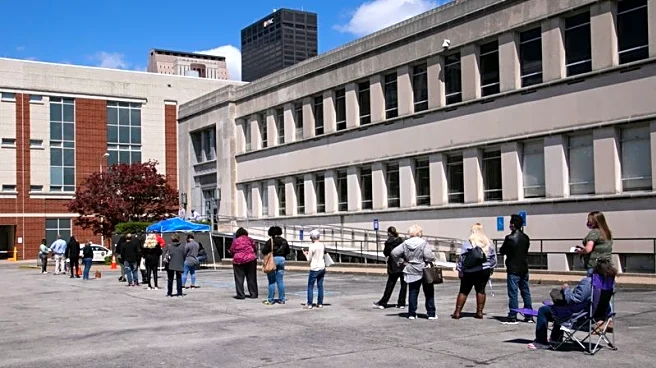What's Happening?
In October 2025, the U.S. experienced a significant surge in layoffs, with job cuts reaching 153,074, marking a 175% increase from the previous year. This represents the highest rate of job cuts for any
October since 2003, according to data from Challenger, Gray & Christmas. The increase in layoffs is attributed to a challenging economic climate and the adoption of disruptive technologies, similar to the technological shifts seen in 2003. The U.S. Bureau of Labor Statistics has been in a state of flux, with no jobs report issued for October due to a federal government shutdown. Meanwhile, ADP's report indicated modest job additions in the private sector, though hiring remains subdued compared to earlier in the year.
Why It's Important?
The surge in layoffs highlights the ongoing economic challenges and the impact of technological advancements on the job market. Industries such as banking, manufacturing, and media are particularly affected, with employers becoming more cautious in their hiring practices. The high rate of job cuts, especially in the fourth quarter, is seen as unfavorable, as it coincides with a period traditionally associated with job creation. The situation underscores the delicate balance between technological progress and workforce stability, with potential implications for economic policy and labor market strategies.
What's Next?
As the U.S. navigates these economic challenges, stakeholders will likely focus on strategies to mitigate the impact of layoffs and support workforce transitions. Policymakers may need to address the balance between technological innovation and job preservation, while businesses might explore ways to adapt to the changing landscape. The role of government reports and data analysis will be crucial in shaping future economic policies and labor market interventions.













